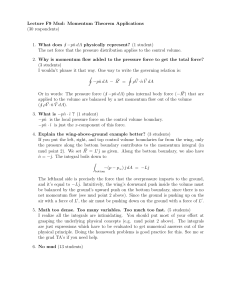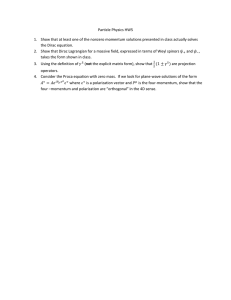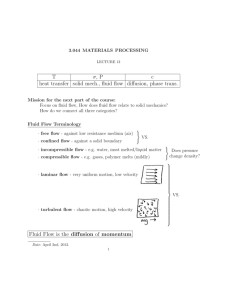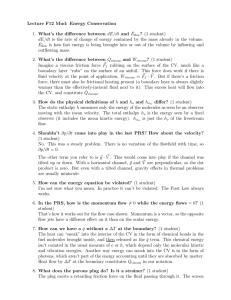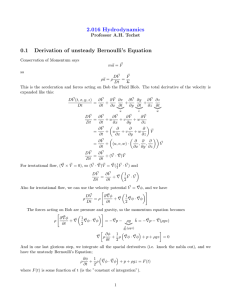Lecture F8 Mud: Momentum Flow, ... (34 respondents)
advertisement
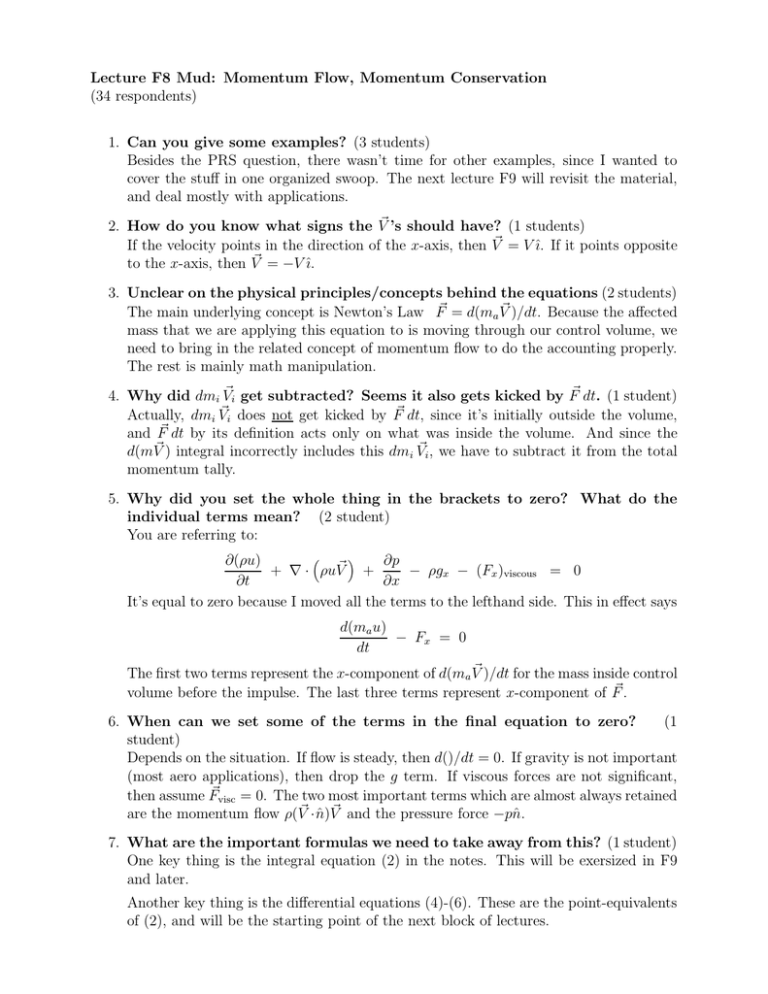
Lecture F8 Mud: Momentum Flow, Momentum Conservation (34 respondents) 1. Can you give some examples? (3 students) Besides the PRS question, there wasn’t time for other examples, since I wanted to cover the stuff in one organized swoop. The next lecture F9 will revisit the material, and deal mostly with applications. � ’s should have? (1 students) 2. How do you know what signs the V � = V ı̂. If it points opposite If the velocity points in the direction of the x-axis, then V � to the x-axis, then V = −V ı̂. 3. Unclear on the physical principles/concepts behind the equations (2 students) � )/dt. Because the affected The main underlying concept is Newton’s Law F� = d(ma V mass that we are applying this equation to is moving through our control volume, we need to bring in the related concept of momentum flow to do the accounting properly. The rest is mainly math manipulation. �i get subtracted? Seems it also gets kicked by F� dt. (1 student) 4. Why did dmi V � Actually, dmi Vi does not get kicked by F� dt, since it’s initially outside the volume, and F� dt by its definition acts only on what was inside the volume. And since the �) integral incorrectly includes this dmi V �i , we have to subtract it from the total d(mV momentum tally. 5. Why did you set the whole thing in the brackets to zero? What do the individual terms mean? (2 student) You are referring to: � �(�u) � + �p − �gx − (Fx )viscous = 0 + � · �uV �t �x It’s equal to zero because I moved all the terms to the lefthand side. This in effect says d(ma u) − Fx = 0 dt � )/dt for the mass inside control The first two terms represent the x-component of d(ma V volume before the impulse. The last three terms represent x-component of F� . 6. When can we set some of the terms in the final equation to zero? (1 student) Depends on the situation. If flow is steady, then d()/dt = 0. If gravity is not important (most aero applications), then drop the g term. If viscous forces are not significant, then assume F�visc = 0. The two most important terms which are almost always retained � · n) � and the pressure force −pˆ are the momentum flow �(V n. ˆ V 7. What are the important formulas we need to take away from this? (1 student) One key thing is the integral equation (2) in the notes. This will be exersized in F9 and later. Another key thing is the differential equations (4)-(6). These are the point-equivalents of (2), and will be the starting point of the next block of lectures. 8. Math is very difficult to follow. Various questions on �, � · (), etc. Can we review some of 18.02? Do you have links to relevant 18.02 material? (6 students) I’ve been stating relevant vector theorems and identities before they are used in class. I’m trying to decide what else I can do in a time-effective manner. Try googling “div grad curl” 9. No mud (12 students)

